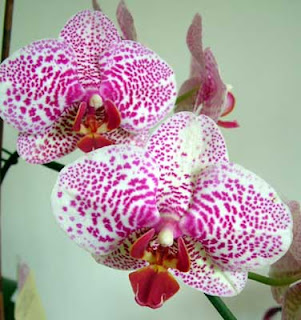"I pollinated a cut-flower stem of Disa and it produced seed in about 5 weeks. As soon as the capsule started to yellow a little bit and looked like it was going to split, I took the capsule and sowed the seed.
I used New Zealand sphagnum moss for growing media. I took the moss and boiled it in distilled water for about fifteen minutes, to kill any moss spores or fungus. After cooling, I filled a 15cm pot about three-quarters to the top with moss, and firmed it down very tightly. I then sowed the seed over the surface of the moss. After sowing, I covered the pot with plastic saran wrap from the kitchen, and held it in place with a large rubber band. I placed the pot about 40cm below a pair of 40 watt fluorescent lamps. I put the pot in a shallow dish with about 2cm of distilled water in the dish at all times. Temperature was about 20C.
I saw seedlings growing after about 45 days and they reached about 1cm in about 100 days. When they reached this height I started picking out the larger ones and placing them in community pots of about 10 seedlings each. They reached blooming size in two years.
Hope this helps - Ed"
I will try this method and post here the results of my trial. I also read that in South Africa some growers use just sand. I purchased some aquarium sand recently so will try this too.
I hope to have plenty of seeds to experiment with - pics show pods ripening from various crosses and self-pollinations done over the past few weeks.
The Disa Safron that arrived in poor condition - described in an earlier post - seems to have survived its radical treatment. New leaves are beginning to appear. A second bloom opened on Orangeade but like the first, the pollens were damaged. However I used the blooms to pollinate with Brides Dream on the first and last week with Riette which I bought last weekend. Riette's pollens were separated from the plant onto the packaging so they had to be used.
Being a beginner with Disas I have little idea whether or not any interesting results will be forthcoming with the crosses I have made. At this stage I am just producing fresh seed to experiment with and if a nice plant results I will be doubly pleased.

Above Orangeade with a swelling seed pod and below Watsonii and Kewensis with seed pods nearly ready for sowing.



One of the Safron splits showing new leaves after the weak bleach treatment.

































